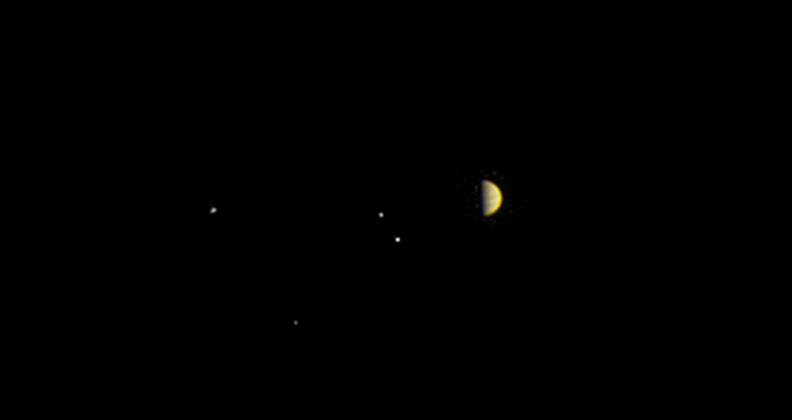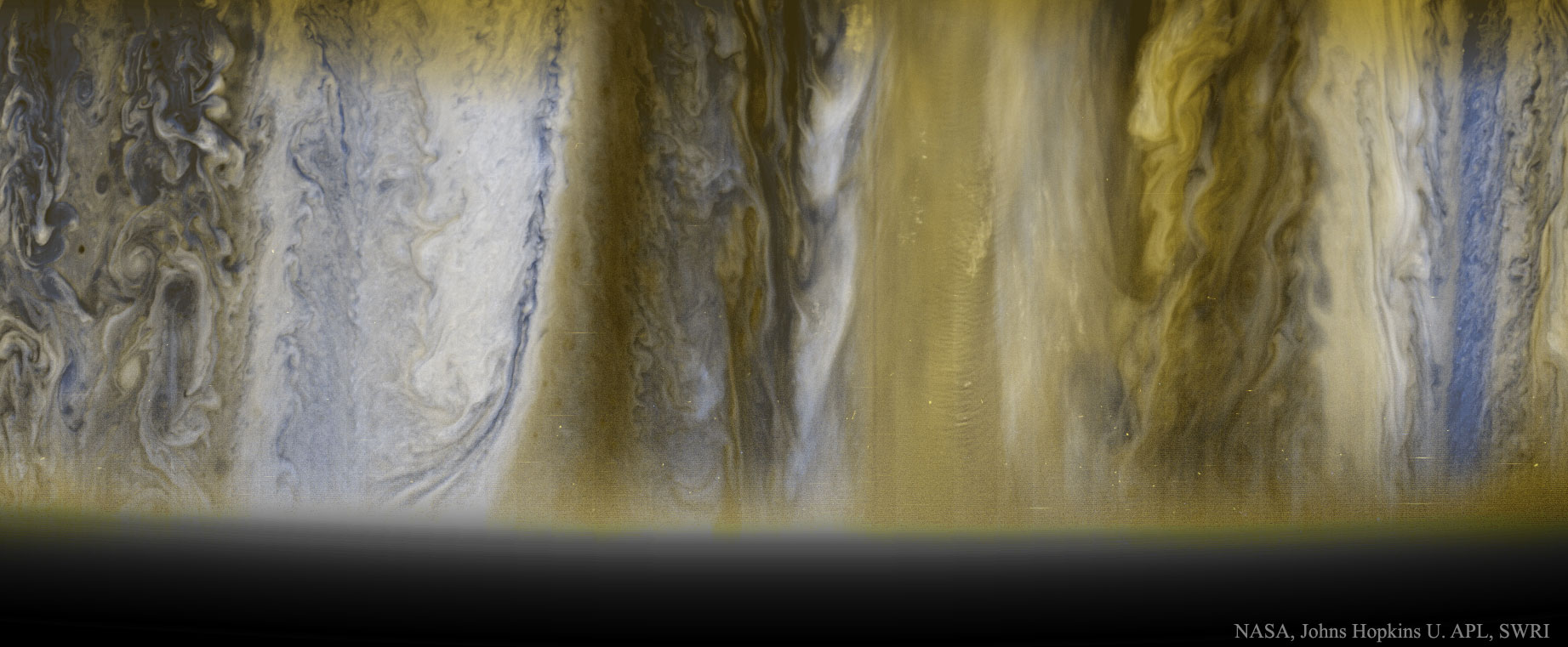Juno just days away from insertion in Jupiter
NASA’s spacecraft Juno (named after the Roman goddess who was Jupiter’s wife and the first to see his true nature) will insert into Jupiter’s orbit in 10 days time.
more…
Juno just days away from insertion in Jupiter
NASA’s spacecraft Juno (named after the Roman goddess who was Jupiter’s wife and the first to see his true nature) will insert into Jupiter’s orbit in 10 days time.
more…
CrazyNeutrino said:
Juno just days away from insertion in JupiterNASA’s spacecraft Juno (named after the Roman goddess who was Jupiter’s wife and the first to see his true nature) will insert into Jupiter’s orbit in 10 days time.
more…


The UK has its credit rating outlook downgraded to “negative” by leading financial agency Moody’s, as outgoing PM David Cameron faces pressure to speed up “divorce” talks with the EU.
dv said:
The UK has its credit rating outlook downgraded to “negative” by leading financial agency Moody’s, as outgoing PM David Cameron faces pressure to speed up “divorce” talks with the EU.
Bloody NASA.
https://www.missionjuno.swri.edu/news/juno-closing-in-on-jupiter
On June 11, Juno began transmitting to and receiving data from Earth around the clock. This constant contact will keep the mission team informed on any developments with their spacecraft within tens of minutes of it occurring. On June 20, the protective cover that shields Juno’s main engine from micrometeorites and interstellar dust was opened, and the software program that will command the spacecraft through the all-important rocket burn was uplinked.
All of Juno’s instruments, including JunoCam, are scheduled to be turned back on approximately two days after achieving orbit. JunoCam images are expected to be returned from the spacecraft for processing and release to the public starting in late August or early September.
Juno has been holding itself as a repository of amateur images of Jupiter, such as the image above from 21 Jun.
More amateur images here.
https://www.missionjuno.swri.edu/junocam/planning?p=1
Another oldie of Jupiter, but a goodie. From New Horizons.

So is it 7 days from now or 7 days from the US’s 28/06 that Juno inserts?
Shot by New Horizons.

Movie trailer for Juno arrival, all animation and “biggest baddest” type hype. Not really worth watching but here for completelness.
https://www.youtube.com/watch?v=SgEsf4QcR0Q&index=1&list=PLTiv_XWHnOZpM1iLQr95P4KDXYiYnJUOE
NASA’s Juno mission is almost at Jupiter and here’s why you should care
Right now a spacecraft the size of a tennis court is hurtling towards Jupiter at a speed of 30 km per second. Over the next four days it will more than double in speed as it feels the planet’s huge gravitational pull, before slamming into reverse and going into orbit.
more…
So the craft itself is 3600 kg and will burn 800kg of fuel in slowing down which is 35% of its fuel load. Does that sound right?
AwesomeO said:
So the craft itself is 3600 kg and will burn 800kg of fuel in slowing down which is 35% of its fuel load. Does that sound right?
Has that much fuel ever been fired in a descent before?
Postpocelipse said:
AwesomeO said:
So the craft itself is 3600 kg and will burn 800kg of fuel in slowing down which is 35% of its fuel load. Does that sound right?
Has that much fuel ever been fired in a descent before?
I think it is probably 80 kg.
AwesomeO said:
Postpocelipse said:
AwesomeO said:
So the craft itself is 3600 kg and will burn 800kg of fuel in slowing down which is 35% of its fuel load. Does that sound right?
Has that much fuel ever been fired in a descent before?
I think it is probably 80 kg.
Have to remember it has to deal with Jupiter while weighing as much as a small bus.
Weight: 7,992 pounds (3,625 kilograms) total at launch,
consisting of 3,513 pounds (1,593 kilograms) of spacecraft,
2,821 pounds (1,280 kilograms) of fuel and
1,658 pounds (752 kilograms) of oxidizer.
http://www.jpl.nasa.gov/news/press_kits/JunoLaunch.pdf
AwesomeO said:
Postpocelipse said:
AwesomeO said:
So the craft itself is 3600 kg and will burn 800kg of fuel in slowing down which is 35% of its fuel load. Does that sound right?
Has that much fuel ever been fired in a descent before?
I think it is probably 80 kg.
No the 35% fuel load is required to slow the craft so that it can be set in orbit around the planet. Apparently the craft’s speed doubles by the gravitational pull as it nears the planet, so considerable force is required to slow it down.
ChrispenEvan said:
Weight: 7,992 pounds (3,625 kilograms) total at launch,
consisting of 3,513 pounds (1,593 kilograms) of spacecraft,
2,821 pounds (1,280 kilograms) of fuel and
1,658 pounds (752 kilograms) of oxidizer.http://www.jpl.nasa.gov/news/press_kits/JunoLaunch.pdf
That is some impressive figures to have out there as a probe.
What is the comparative fuel to weight ratio it takes to get the entire launch vehicle Jupiter bound?
At what speed does Juno orbit Jupiter ?
> What is the comparative fuel to weight ratio it takes to get the entire launch vehicle Jupiter bound?
I should be able to answer that.
Launch vehicle: United Launch Alliance Atlas V-551
Liftoff mass of 587,000 Kilograms – most of which is fuel.
Mass other than fuel includes 21,000 kg first stage, 6,000 kg boosters, 2,400 kg adapter, 2,200 kg second stage, 4,000 kg fairing.
So fuel mass is approx 551,000 kg.
Payload mass Juno (including fuel) 3,625 kg, gives Fuel:Weight = 152:1
Juno mass excluding fuel 1,593 kg, gives Fuel:Weight = 346:1
Cymek said:
At what speed does Juno orbit Jupiter ?
I should be able to answer that.
It’s going to be a strongly elliptical orbit with maximum speed (in m/s) on first approach near sqrt(2GM/R) where
G = Gravitational constant = 6.67*10^-11
M = Mass of Jupiter = 1.898*10^27
R = Radius of closest approach = (69.9+4.2)*10^6
That gives an insertion speed at perijove of sqrt(3.4*10^9) m/s = 58 km/s. After that the speed will drop as the orbit is made more circular.
Hey, I think I got that right! The speed of New Horizons spacecraft was 58.5 km/s.
More info arriving as Juno gets closer. Another long distance photo of Jupiter with moons. Sound file as Juno passes the shock wave at the start of Jupiter’s magnetosphere.
At last count, the Coalition has 50.06% of the Two Party Preferrred vote.
Wrong Thread
Insertion scheduled for approximately 9pm pacific time tommorow.
Insertion scheduled for approximately 9pm pacific time tommorow.
Aaand it has been recovered post-orbital insertion
Excellent. I look forwards to the holiday snaps.
dv said:
Aaand it has been recovered post-orbital insertion
And post coital insertion?
Actual time lapse video of the approach
https://www.youtube.com/watch?v=XpsQimYhNkA
mollwollfumble said:
Cymek said:
At what speed does Juno orbit Jupiter ?
I should be able to answer that.
It’s going to be a strongly elliptical orbit with maximum speed (in m/s)
…
That gives an insertion speed at perijove of sqrt(3.4*10^9) m/s = 58 km/s. Hey, I think I got that right! The speed of New Horizons spacecraft was 58.5 km/s.
Juno also broke the Guinness word record for the furthest solar powered object.
Still no images new from Juno. Long wait because Juno is in a long orbit – nearly two months long.
“As planned, the spacecraft returned to high-rate communications on July 5 and powered up five of its science instruments on July 6. Per the mission plan, the remaining science instruments will be powered up before the end of the month. Juno’s science instruments had been turned off in the days leading up to Jupiter orbit insertion.”
“We are in our planned 53.4 day orbit. Now we are focusing on preparing for our fourth and final main engine burn, which will put us in our 14-day science orbit on October 19. The next time Juno’s orbit carries it close by the planet will be on Aug. 27. You can expect us to release some information about our findings around September 1.”
First image from Juno in orbit around Jupiter.
http://www.nasa.gov/feature/jpl/nasa-s-juno-spacecraft-sends-first-in-orbit-view

“This scene from JunoCam indicates it survived its first pass through Jupiter’s extreme radiation environment without any degradation and is ready to take on Jupiter,” said Scott Bolton, principal investigator from the Southwest Research Institute in San Antonio. “We can’t wait to see the first view of Jupiter’s poles.”
The new view was obtained on July 10, 2016, at 10:30 a.m. PDT (1:30 p.m. EDT, 5:30 UTC), when the spacecraft was 2.7 million miles (4.3 million kilometers) from Jupiter on the outbound leg of its initial 53.5-day capture orbit. The color image shows atmospheric features on Jupiter, including the famous Great Red Spot, and three of the massive planet’s four largest moons — Io, Europa and Ganymede, from left to right in the image.